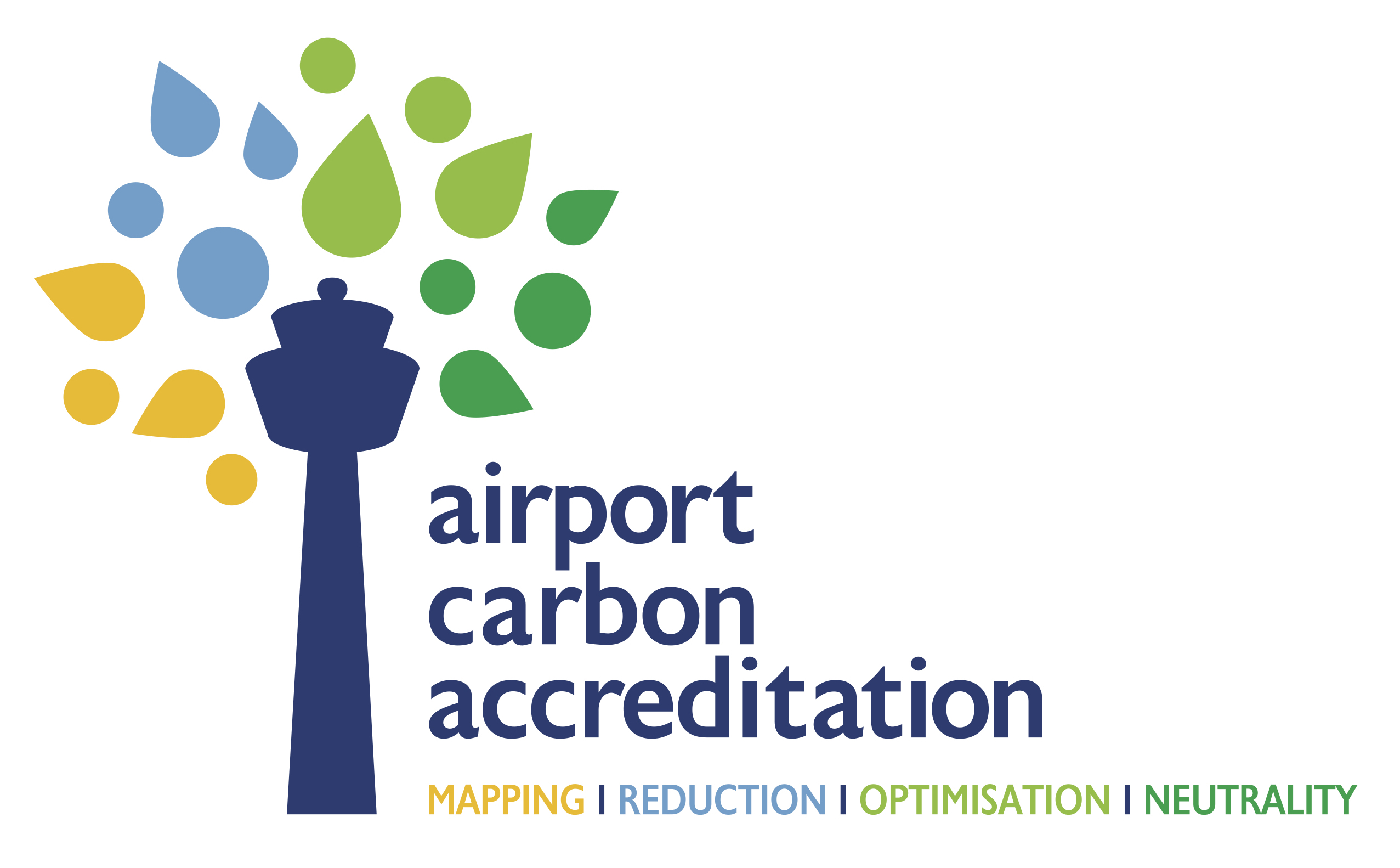Global carbon standard for airport operators marks 10 years
4 April 2019• 2019 marks 10 years since the launch of the Airport Carbon Accreditation programme
• 264 airports now actively engaged in addressing their impact on Climate change
• Over 100 airports are encouraging other companies on the airport site to lower their CO2
• Airport operators of 49 airports worldwide are carbon neutral
As this year’s ACI Asia-Pacific & World Annual General Assembly (WAGA) takes place in Hong Kong, Airports Council International provided an update on the latest developments among the community of 264 airports currently in the global carbon management standard, Airport Carbon Accreditation.
Initially launched in Europe in 2009, the independent annual certification programme has since gone on to become the global standard for airport operators seeking to address their carbon footprint.
Niclas Svenningsen, who heads the Climate Neutral Now initiative at the United Nations Framework Convention on Climate Change (UNFCCC) Secretariat in Bonn, Germany commented “In terms of pure scale, Climate change is a daunting challenge – people’s reactions range from intense anxiety to jaded cynicism. The best response is to try to do something about it – starting by taking responsibility for what you control, for what you deal with. For this reason, I congratulate ACI on a decade of Airport Carbon Accreditation. It is an inspiring example of an industry that proactively sought to make a positive change – and now with 264 airports on board – it is succeeding in doing that. I invite people to find out more about their local airport’s involvement and ambitions – mobility is a fundamental part of life, so let’s try to make it as efficient & ecological as possible.”
Angela Gittens, Director General of ACI World said “The global airport industry is committed to reducing its carbon emissions and, in 2009, the Airport Carbon Accreditation programme was launched in Europe to empower airport operators with a detailed, multi-step path to carbon neutrality. We are delighted that the programme quickly gathered global momentum which is a reflection of how airport operators think local and global. Running an airport is a complex business and airport operators are one piece of this puzzle with many stakeholders on the airport site. Working relationships need to be fostered and maintained and airport operators are addressing their direct carbon emissions, but also engaging partners to address theirs.”
On the occasion of the ACI Asia-Pacific and World Annual General Assembly, 18 of the 54 accredited airports in the region were presented with their certificates**, including 8 airports at Level 1 ‘Mapping’, 5 airports at Level 2 ‘Reduction’ and 5 airports at Level 3 ‘Optimisation’, the highest level possible without using carbon offsets. Airport Carbon Accreditation has been live in Asia-Pacific since November 2010 and the 54 accredited airports in the region welcome 37.3% of annual passenger traffic.
With 4 different levels of accreditation covering all stages of carbon management (Mapping, Reduction, Optimisation and Neutrality), Airport Carbon Accreditation is independently administered, institutionally-endorsed¹ and has the support of the United Nations Framework Convention on Climate Change (UNFCCC), the International Civil Aviation Organisation (ICAO), US Federal Aviation Administration and the European Commission (EC).
To reduce their carbon emissions, airport operators need to consider the full extent of the emissions sources under their direct control. Investment in more energy efficient lighting, heating, switching to hybrid or electric ground vehicles, onsite renewables, energy management tools and employee behavioural change all have a part to play. The possibilities become even more diverse when airport operators engage other stakeholders on the airport site as well (Levels 3 and 3+ of the programme), with initiatives such as Airport-Collaborative Decision-Making (A-CDM), support to Continuous Descent Operations and Time-Based Separation lowering airline-associated carbon emissions and better intermodal access through electric or hybrid taxis offering passengers cleaner transport solutions to/from the airport.
Carbon neutral airports at Level 3+ of the programme have to provide evidence of undertaking all the actions required by the programme (mapping their emissions, reducing them and engaging others on the airport site), before investing in responsible carbon offsets. The 44 carbon neutral airports during Year 9 of the programme (May 2017 to May 2018) offset 672,000 tonnes of CO2 in residual emissions. As part of the evolving nature of the programme, a dedicated guidance document on offsetting has recently been released, to help airport operators select high quality offsets.
*****
For all the latest key figures, including details of the accredited airports in each world region, their actions and the difference the programme is making, check out the interactive maps, case studies & programme results on www.AirportCO2.org. The global carbon reduction achieved during Year 10 (June 2018 to May 2019) will be announced in the autumn.


